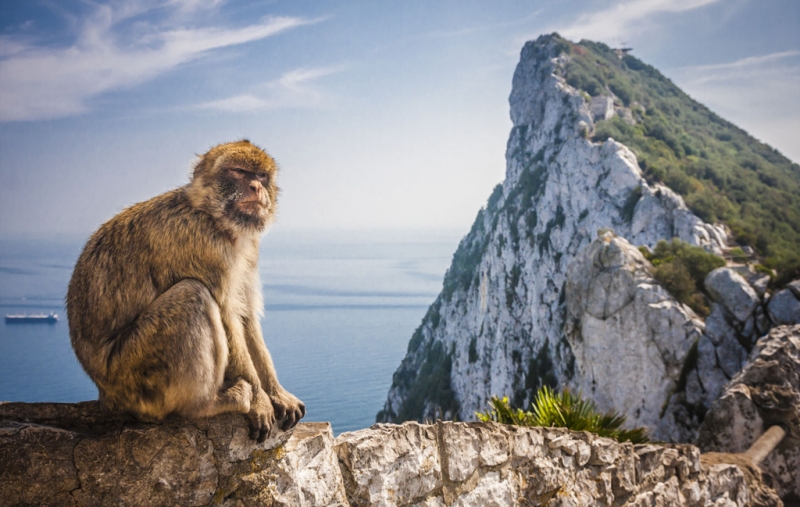
Cape Gibraltar, or simply The Rock,
—British territory located off the southern coast of Spain. In antiquity, this place was considered one of the two mythical Pillars of Hercules, behind which was the end of the world. Since the beginning of the 18th century, this land, which belonged to the Spaniards, but under the terms of the Peace of Utrecht went to the British, remains the main stumbling block in the relations of the two kingdoms. True, there is not a lot of land here: most of Gibraltar is occupied by a gigantic rock – a 426-meter limestone ridge, at the foot of which the city of the same name with a population of only 30 thousand people is clinging.
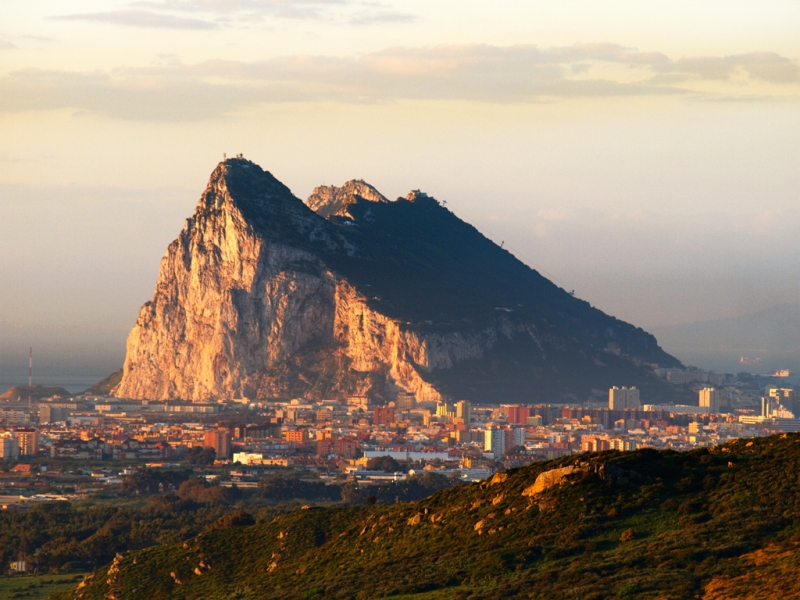
This is little England, where pubs serve ale with fish and chips, and there are “branded” red telephone booths at every turn. Only the climate here is better than in the British Isles, and there are many wild monkeys. The latter, by the way, is not a joke.
Despite its modest size, the city has an international airport. There is no direct connection with Russia, but you can fly with a transfer. You can also sail here on a cruise ship (the seaport is 5 minutes from the airport) or come by bus/car from neighboring Spain. Russians need a visa to visit Gibraltar, but if you have a valid Schengen visa (necessarily “cartoon”!),
then you won’t need to knock on the doorstep of the British consulate – just fill out a short form right at the border to immediately receive a stamp in your passport allowing you to stay in Gibraltar for up to 21 days.
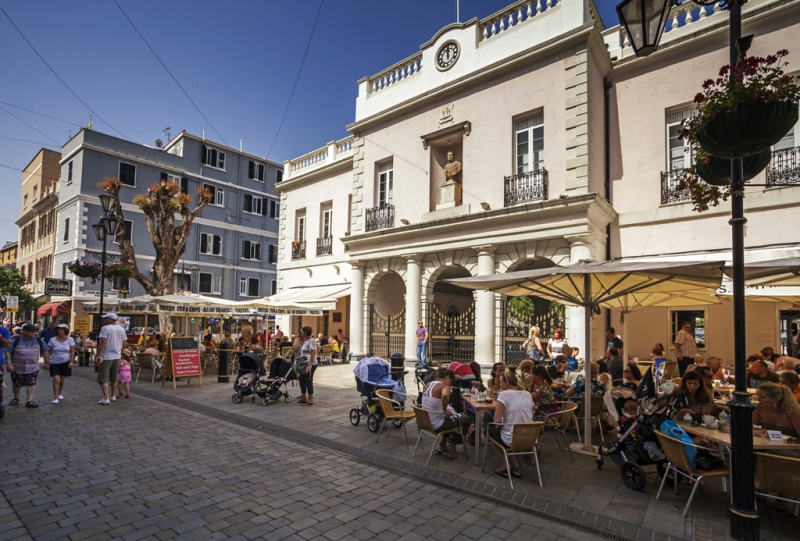
If you have limited time, head straight to Main Street, the main thoroughfare where most of the city’s attractions are located. For example, the residence of the governor of the Convent, that is, the “Monastery,” so named because in the 15th century, under the Spaniards, there really was a Franciscan monastery here. And two more cathedrals, Catholic and Protestant, and the ancient Trafalgar cemetery, where, however, only two participants in the naval battle that gave it its name are buried, but there are interesting tombstones from the turn of the 18th-19th centuries, for example, with Shakespeare’s verses as an epitaph.
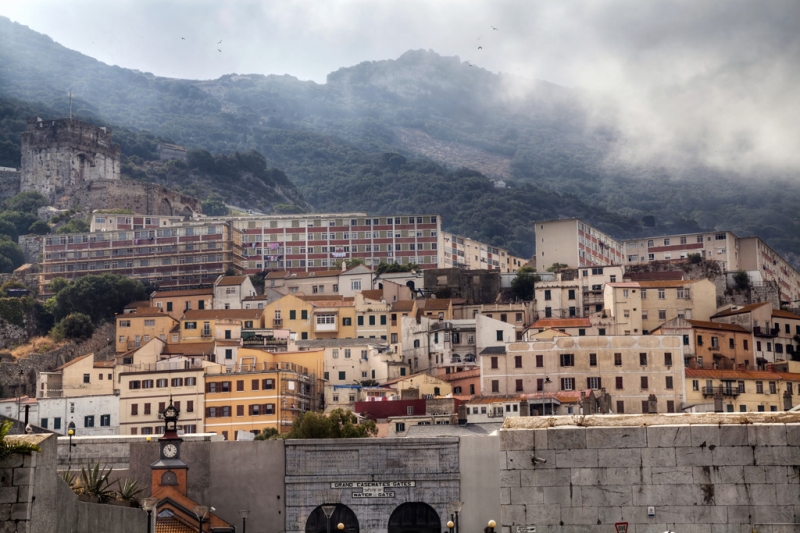
History buffs may also be interested in the Gibraltar Museum, whose exhibition covers the period from 200 million years ago to the present day; and the now operating Garrison Library, founded in 1793, where free excursions are conducted on Fridays, and many bastions, walls, gates, reminiscent of the fact that for centuries this place was, first of all, a military fortification. The oldest well-preserved structure is the 16th-century wall, built under the Spanish Emperor Charles I (aka Holy Roman Emperor Charles V),
rises from Main Street up the mountain to the ruins of the Moorish castle.
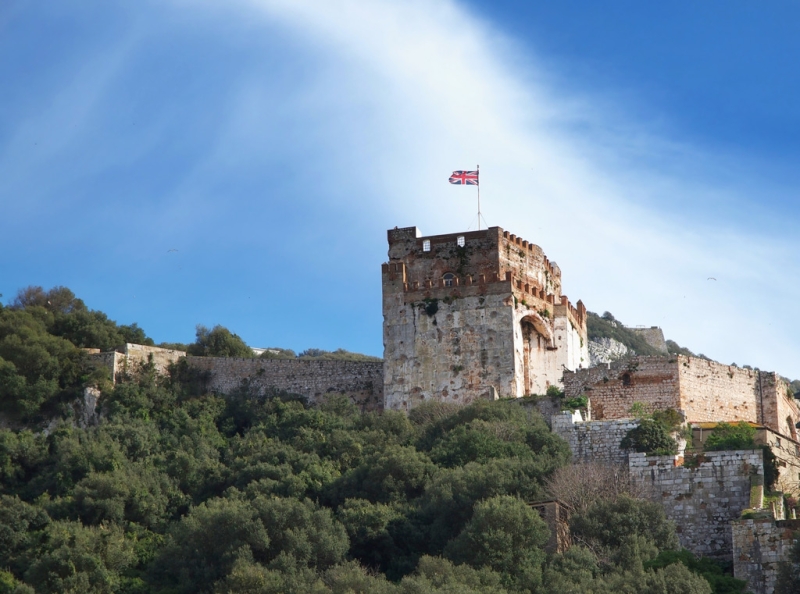
The Moors are not at all relatives of Shakespeare’s Othello, but the troops of Muslims (Arabs and Berbers),
who conquered almost the entire Iberian Peninsula in the 8th century. Their first landing party sailed to Europe from what is now Morocco, led by the commander Tariq ibn Ziyad in 711, and landed just on Gibraltar, as its name reminds: translated from Arabic Jebel Tarik – Mount Tariq. True, only one tower remains from the 11th century castle, the rest of the buildings are later, but what has survived is still impressive.
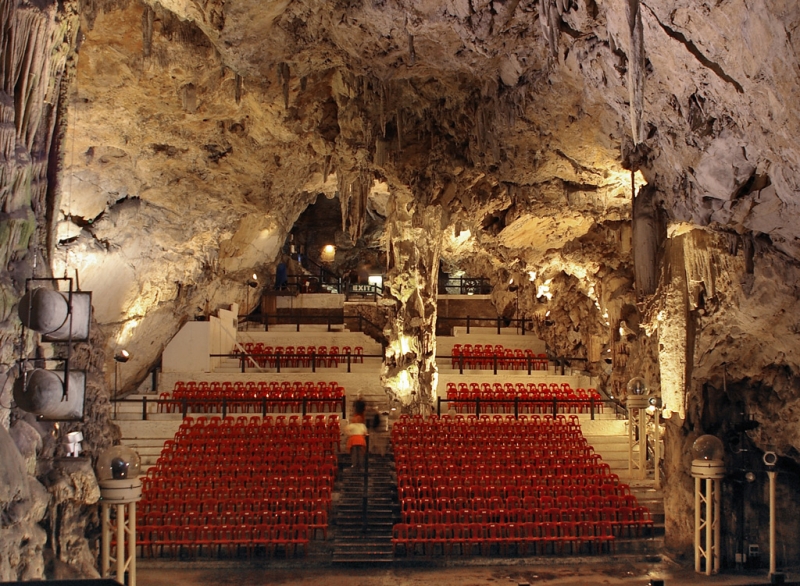
The main attractions of Gibraltar are located above the city – literally, in the rock. Wind and water have carved more than 100 caves into the rock, some of which are open to the public. The most famous is St. Michael’s Cave, once considered bottomless. Its Cathedral Hall, covered with stalactites and stalagmites, was turned back in the 1960s into a real concert hall for 400 people, where performances are held from time to time.
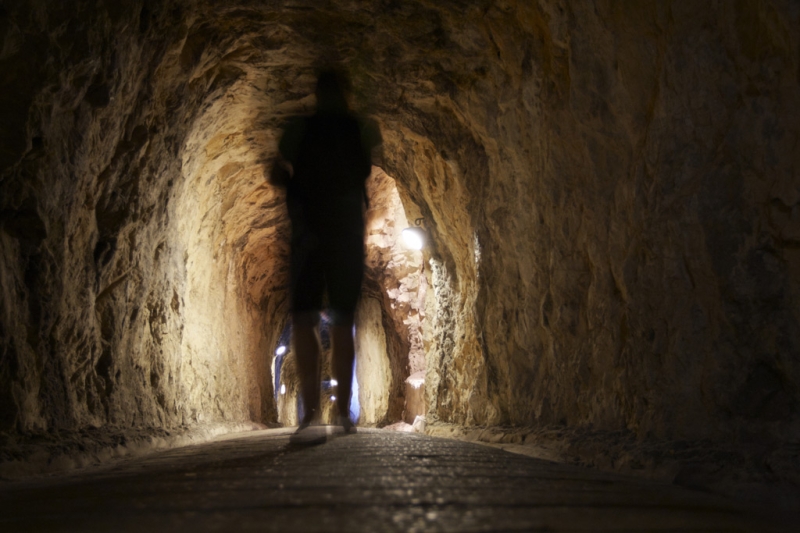
In addition to caves, there are many artificial tunnels in the rock. The British dug them for defense in 1779–1783, during the Great Siege of Gibraltar, undertaken by the Spaniards together with the French, and during the Second World War. These tunnels can also be viewed on a guided tour.
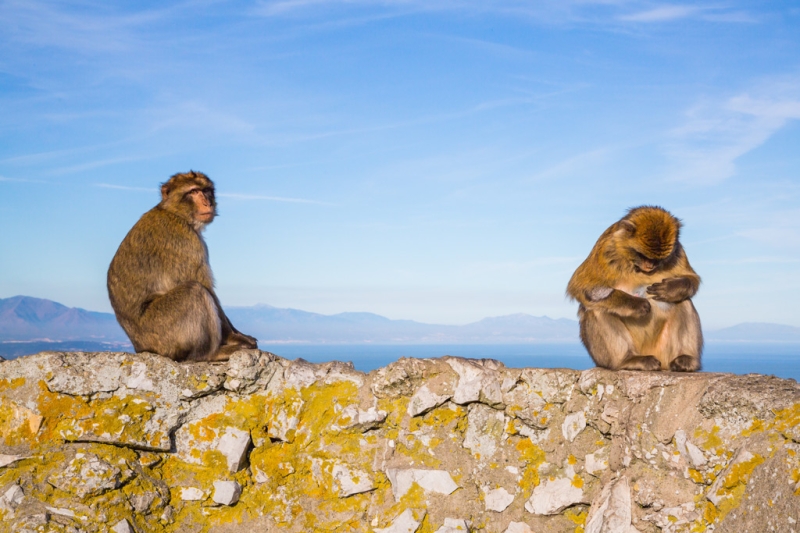
Another local attraction is the already mentioned monkeys. Gibraltar is the only place in Europe where wild primates live, the Maghreb macaques, otherwise known as magots. According to legend, as long as they are on the Rock, it will remain British. Now there are about 160 macaques, they freely walk around the peak, which has the status of a reserve, and beg, or even steal food and at the same time all sorts of inedible things from unwary tourists. Bags, for example. Feeding animals is strictly prohibited, and petting is also prohibited. Although they see people up close many times a day and are not at all afraid of them – that is, us – macaques are by no means tame and can bite!
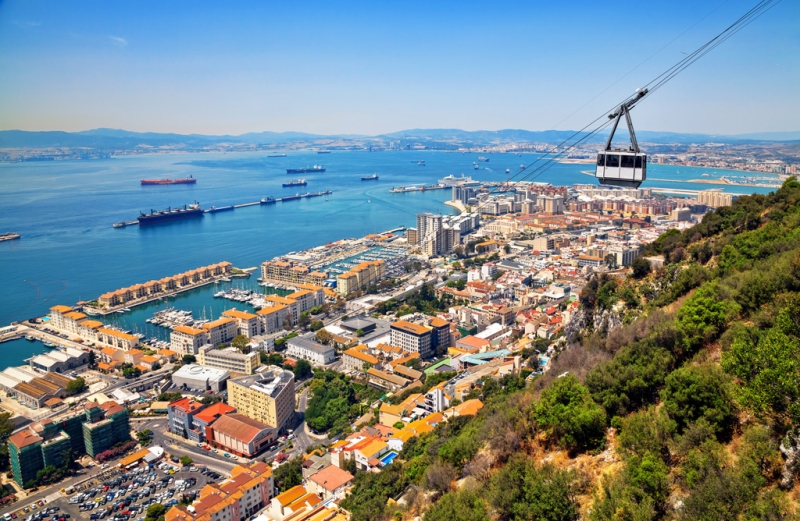
You can climb the rock on foot, by bicycle, by taxi or special tourist buses. But the fastest way is by cable car. The path to the observation deck, located at an altitude of 416 meters, lasts only 6 minutes.
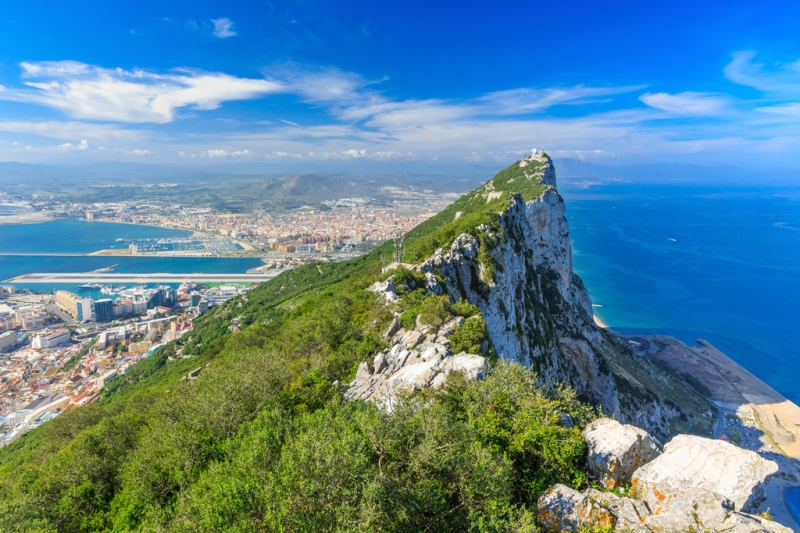
At the top you will find panoramic views of the city lying at the foot, the Spanish coast and Africa, as well as a souvenir shop, a cafe and… the ubiquitous monkeys, because of which, perhaps, it is better to postpone a snack until returning to the city. The descent is gentle, going right past the cave of St. Michael, so you can take a walk, just keep in mind that the journey will take at least 2 hours.
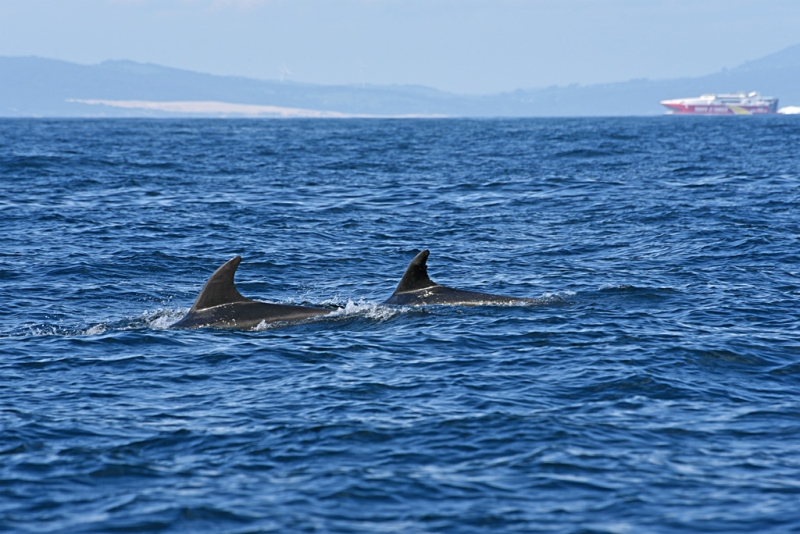
Having descended, you don’t have to immediately return to the streets scorching in the summer sun – you can continue to get acquainted with the wild nature of Gibraltar. For contemplative natures, there is a direct route to the Alameda Botanical Garden, where, in addition to lush southern flora, there is also an open-air theater. And for fans of action and salty spray, go on a boat trip, watch schools of dolphins, or go to diving school and admire the colorful fauna of coastal reefs.
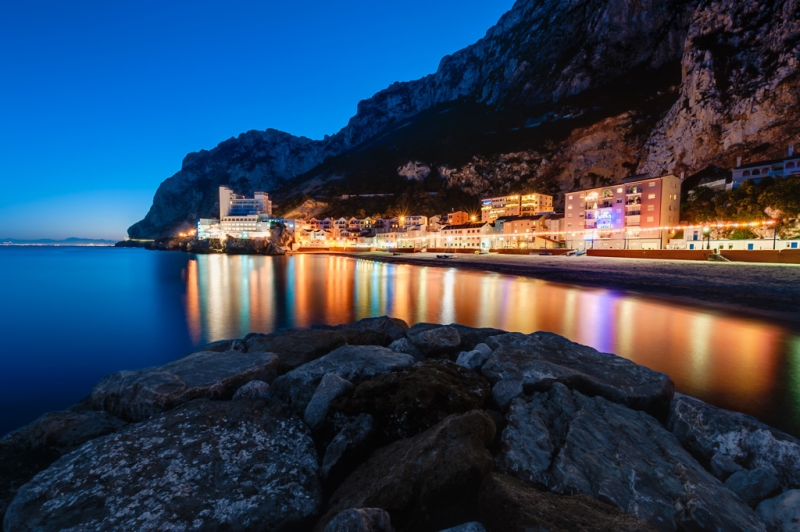
You can also just lie on the sand: the tiny cape has six beaches, four of which are sandy. The longest of them – East Beach and Catalan Bay – are located on the eastern side of the cliff. The latter attracts tourists not only with its fine golden sand, but also with numerous restaurants specializing in fresh seafood. And in Catalan Bay there is the Catholic Church of Our Lady of Sorrows, and once a year, in September, the main religious holiday of Gibraltar is celebrated right on the beach, during which the local bishop blesses the sea.
On OneTwoTrip, you can easily find a hotel near you and make a reservation in minutes.
Take a look at this:
The charm of the British countryside
6 colorful weekend adventures in Europe

